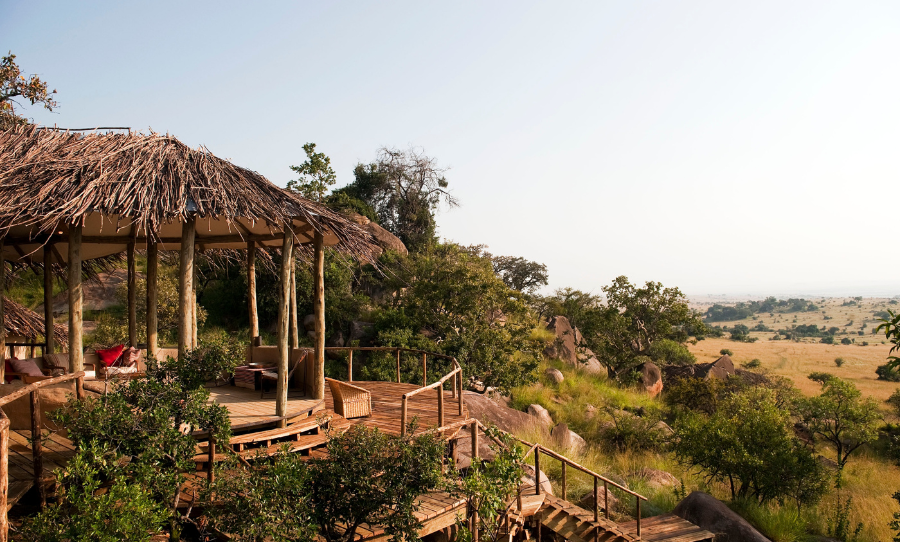For us at Nomad the Green Season is quite simply our favourite time of year in northern Tanzania, but it may not be for the reasons you think.

Gone is the harshness of the dry season, replaced between December and May by a time of extraordinary richness; warm weather, stunning air clarity and a super-abundance of wildlife of all kinds.
But it’s also a time that’s frequently misunderstood, precisely because of the rain; it’s the coming of the rains that drive this wildlife spectacle, but paradoxically a misplaced fear of rain puts many people off travelling. While we think this is a shame, it also creates wonderful opportunities for those who do travel. Even in 2022 it’s possible to find gems that most people aren’t aware of.
It remains true that despite this time of year offering some of the most diverse and rich game viewing, only a handful of people visit what we consider to be the jewel in the crown – the far north of the park.

The migration on the southern plains
Of course the main event in the Serengeti is the migration, which thunders on to the southern plains around Ndutu in early December as soon as the rains replace dry season dust with fresh new grass. This is where we locate our nomadic migration camp, Serengeti Safari Camp, in prime position to access the thousands of square kilometres of short grass plains where the action really takes place.
The migration brings hundreds of thousands of wildebeest calves in mid February, plus young of every species. Predator action surges – sightings of lion, leopard, cheetah and many of the smaller species of cat such as serval, caracal, wildcat are a feature of this time of year in the south.
Africa’s Greatest Game Drive
But to us the migration is really the beginning of one of Africa’s greatest game experiences; a once in a lifetime chance to discover the whole Serengeti. Things really start to get exciting when you point north, driving off the plains and leaving the circus of the migration behind you. This is when you start to grasp the sheer scale and beauty of the Serengeti; kopjes, woodland, hills and rolling valleys with distant blue hills and tantalising horizons drawing you on. Wildlife thrives in every corner of the park.
You’ll come for the migration, but it’s the North you won’t want to leave
The far north of the park is where you’ll find the jewel in the Nomad crown, Lamai Serengeti. A sensational, low-impact lodge, tucked out of sight on a large kopje with massive views over the Lamai wedge to the Rift Valley escarpment to the west of the Maasai Mara.
Northern Serengeti is best known as the location of the dramatic crossings of the Mara River between July and October. But what few people realise is that being part of the same ecosystem as Kenya’s Maasai Mara, it offers the same world class game viewing year round.
The difference is that - astonishingly - while the Mara has permanent hotel beds in the thousands, northern Serengeti, a far larger area, has but a few hundred. So as well as spectacular game viewing, including the real possibility of seeing black rhino, this time of year offers unimaginable space and the prospect of few or no other tourists in sight.
So if you’re looking for the ultimate Northern Tanzania safari in the green season, visit the migration, but don’t forego the chance to head north and see the wilder side of the Serengeti.


